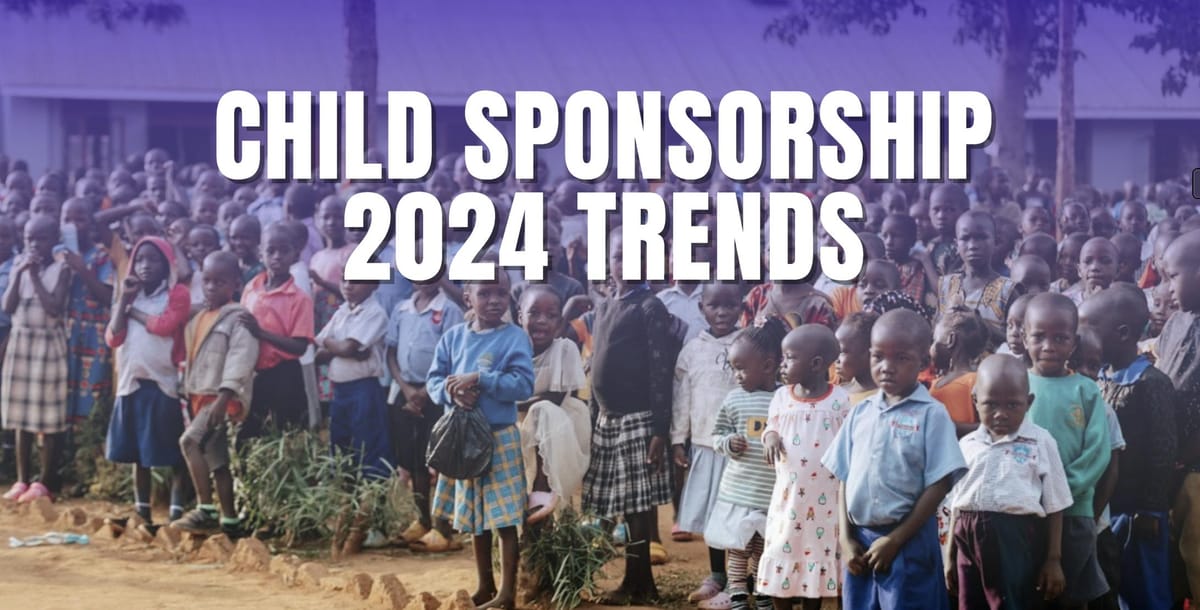Child Sponsorship 2024 Trends
Explore the latest trends in child sponsorship for 2024, focusing on community development, flexible options, and tech advancements for better engagement.

Child sponsorship is changing. Here's what's new in 2024:
- Focus on community development, not just individual kids
- Better tech for sponsor-child communication
- New programs for teens
- Alignment with global development goals
- More flexible sponsorship options
Key Changes
- More tech (apps, management systems)
- Meeting UN Sustainable Development Goals
- Flexible sponsorship choices
- Teen-focused programs (job training, life skills)
- Kids choosing their sponsors
| Trend | What It Means | Example |
|---|---|---|
| Tech | Digital tools for better connection | HelpYouSponsor |
| Global goals | Matching UN SDGs | Community impact focus |
| Flexibility | Personalized support | Adjustable monthly donations |
| Teen focus | Older kid programs | Job-skills training |
| Kid power | Children pick sponsors | World Vision's Chosen™ |
These shifts aim to make sponsorship work better for everyone involved.
How Recent Studies Were Done
Researchers used different methods to study child sponsorship:
- Surveys of families
- Interviews with teachers and staff
- Group discussions with sponsored kids and parents
For example, Plan International looked at 12 million surveys from 2.7 million sponsored children since 2006. This helped them compare results for:
- Girls vs. boys
- Kids with disabilities
- Children in different areas (rural, urban, conflict zones)
Organizations are using new tools to understand their data:
| Tool | Use | Key Feature |
|---|---|---|
| Google Analytics 4 | Website analysis | Free, basic SEO reports |
| GivingDNA | Donor data | Easy-to-use reports |
| BI dashboards | Data visuals | Works with existing systems |
These tools help track website performance, donor behavior, and create targeted campaigns.
What Recent Studies Found
Research shows child sponsorship has big impacts:
Education
| Outcome | Sponsored Kids | Non-Sponsored Kids |
|---|---|---|
| Years of school | 12.03 | 10.24 |
| Finished high school | 64.6% | 44.9% |
| Finished university | 78% | 4.3% |
Money
- Sponsored people earn $13-17 more per month
- More likely to get white-collar jobs
Well-being
- Higher self-esteem and goals
- Less hopelessness
- Better access to clean water and food
A 19-year-old from Cambodia said: "I got to know myself, realize my dreams, and what I want to do in life."
Results by Region
- In Congo, sponsored kids caught up in school within two years
- A six-country study found consistent positive impacts
New Trends for 2024
- Tech Use: Apps like HelpYouSponsor for easier management
- Global Goals: Aligning with UN Sustainable Development Goals
- Flexible Options: Personalized support and adjustable donations
- Teen Programs: Job training and life skills for older kids
- Kid Empowerment: World Vision's Chosen™ lets kids pick sponsors
Problems to Fix
- Communication: Language barriers and limited access in remote areas
- Program Stability: High dropout rates and dependency concerns
- Measuring Results: Need for more long-term data and standardized metrics
Wrap-up
Child sponsorship is evolving to be more community-focused, sustainable, and tech-savvy. Despite challenges, these programs continue to make a big difference in kids' lives.
Future Study Ideas
- Long-term community impact over 15-20 years
- How tech improves sponsor-child communication
- Effectiveness of teen-specific programs
- Best ways to keep sponsors engaged
- How sponsoring one child affects siblings and friends
- Cost-effectiveness of different sponsorship models
- Designing culturally sensitive programs
- Long-term effects on children's goals and self-image
These studies could help organizations like Plan International, which sponsored 1.2 million children in 2022, make their programs even better.

